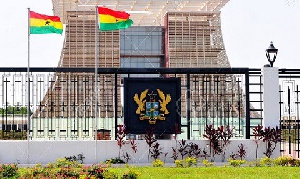Payment cards are plastic tools used to pay for goods and services. They have become an integral part of the financial ecosystem, with many people opting for them over carrying large sums of cash.
Although cards may occasionally fail, they remain a popular and reliable choice for many.
Speaking on the latest edition of BizTech with Mawuli Ahorlumegah, the Head of Financial Crime Management at Fidelity Bank, Ransford Nana Addo Jnr, explained the different types of payment cards.
His insights can serve as a guide for anyone considering securing one.
Below are the three main types of cards and their purposes:
1. Prepaid Cards
Prepaid cards allow you to load funds onto the card, which can then be used for purchases, bill payments, or cash withdrawals.
Some prepaid cards are reloadable, while others, such as gift cards, travel cards, or payroll cards, are designed for specific purposes.
These cards are convenient to use and accepted at any location that supports the card's network. They also help with budgeting since you can only spend the amount loaded onto the card.
2. Debit Cards
Debit cards are linked to a bank account, allowing you to spend money directly from your account balance. This means the amount you spend or withdraw is deducted immediately from your account.
3. Credit Cards
Credit cards function like a loan. They allow you to borrow money for purchases, bill payments, or cash advances, with the agreement that you will repay the borrowed amount along with any applicable interest and fees.
How to Get a Credit Card
1. Apply for a credit card. The issuer will assess your creditworthiness before approval.
2. If approved, activate the card by following the issuer's instructions.
Important Safety Tips
Avoid taking photos of your payment cards (prepaid, debit, or credit), as fraudsters could use them for unauthorised transactions, such as online shopping.
Shop wisely and keep your cards secure during the festive season!
Watch the latest edition of BizTech below:
SA/MA
Business News of Wednesday, 25 December 2024
Source: www.ghanaweb.com

















